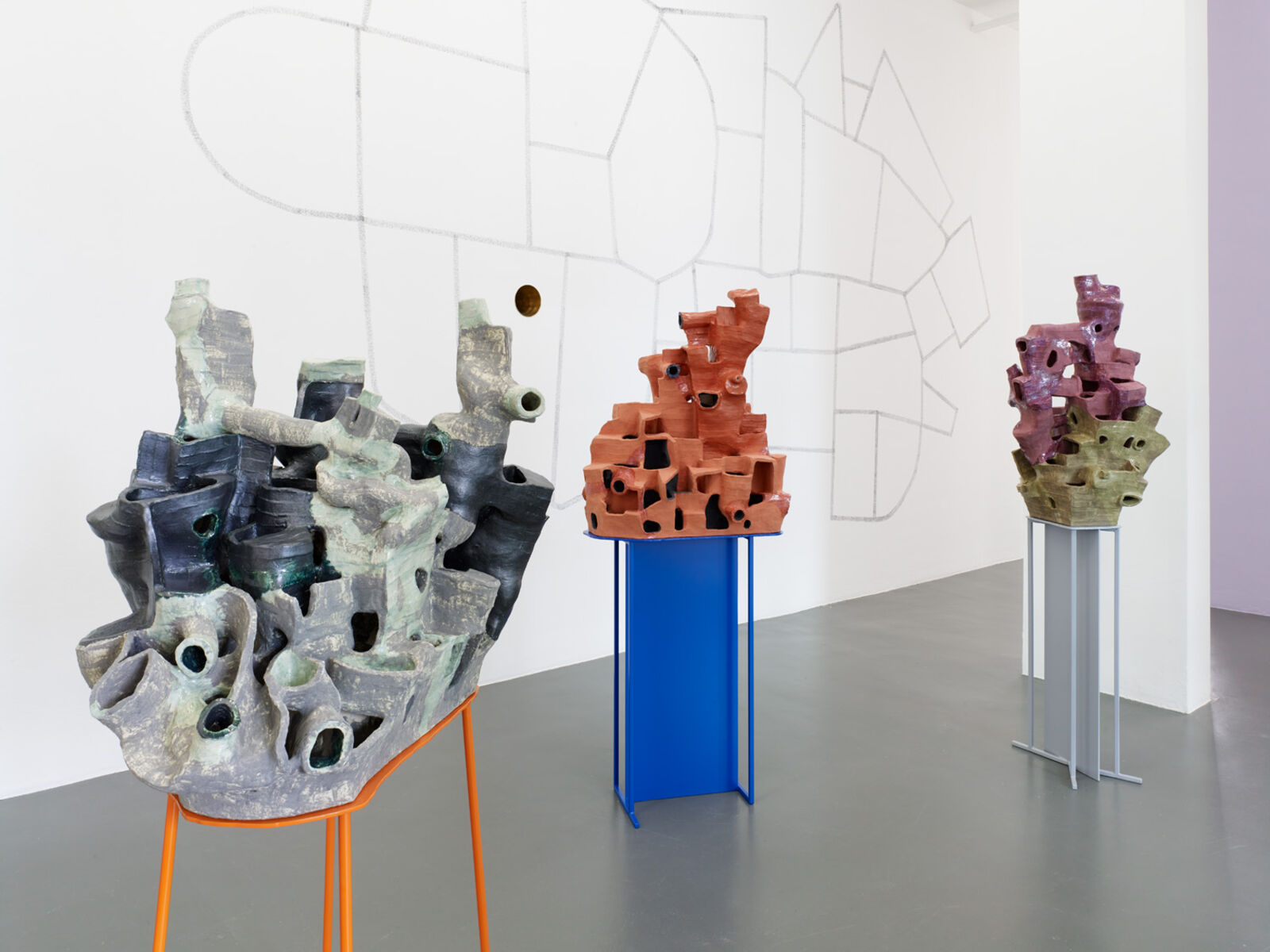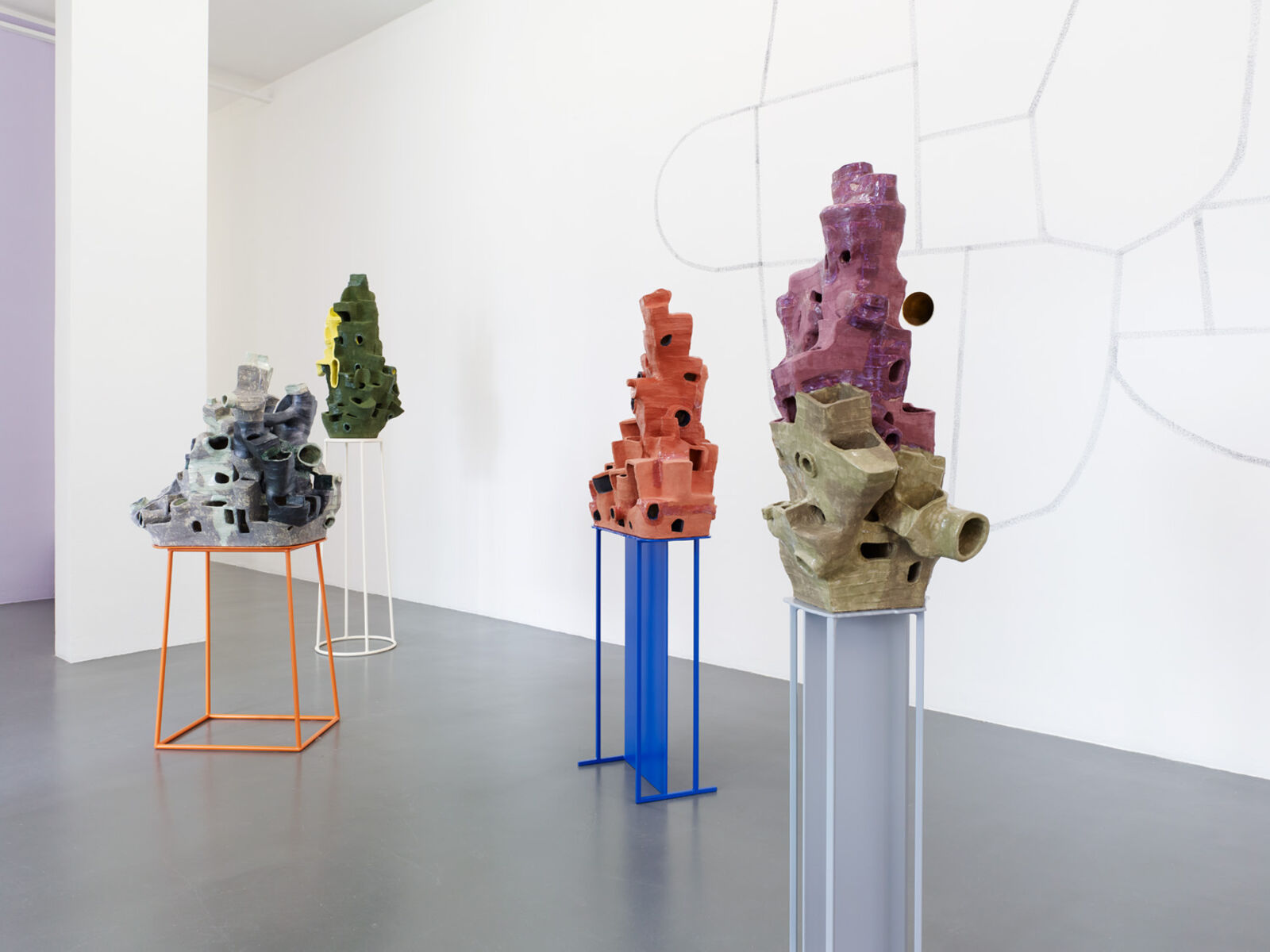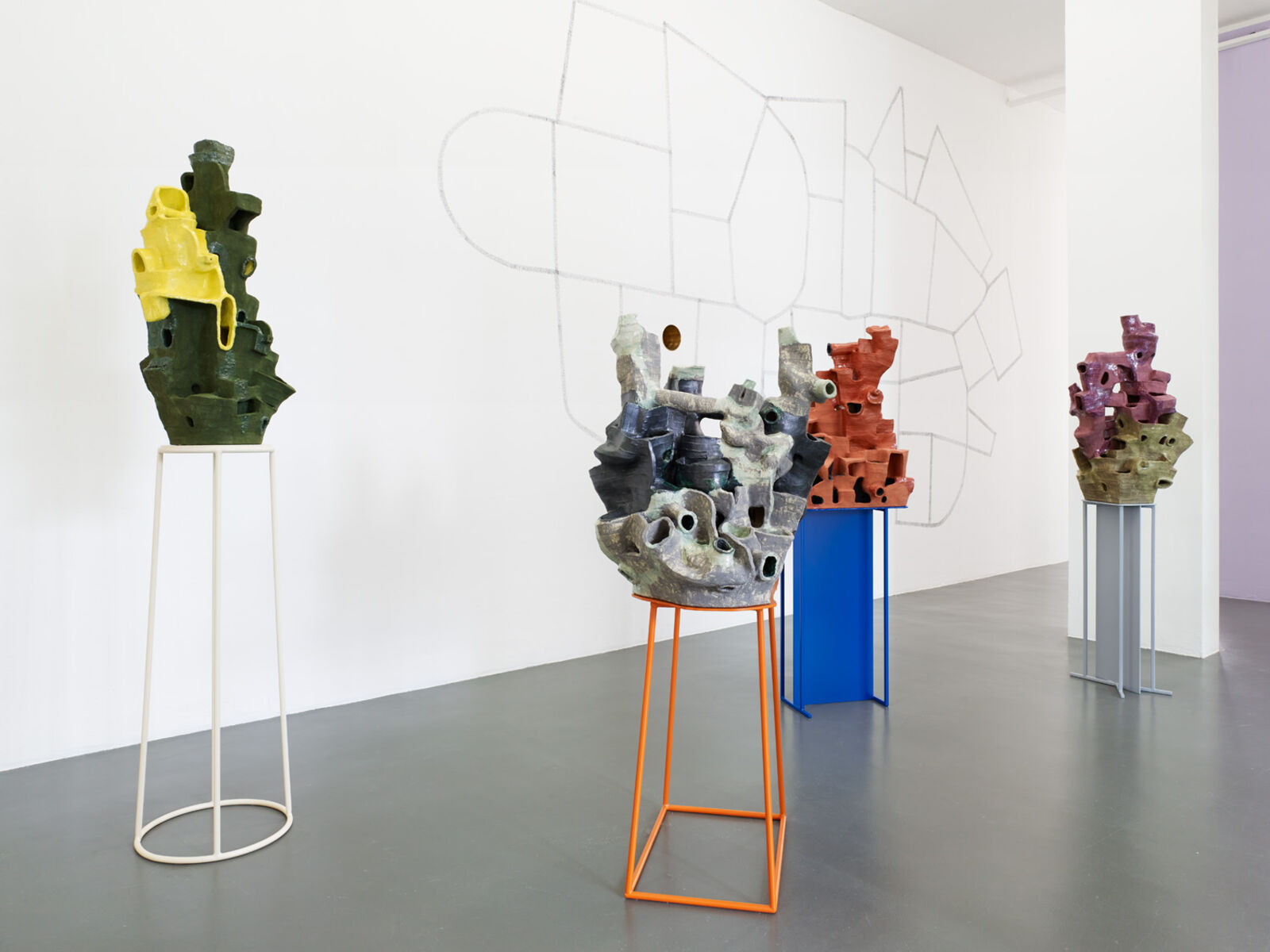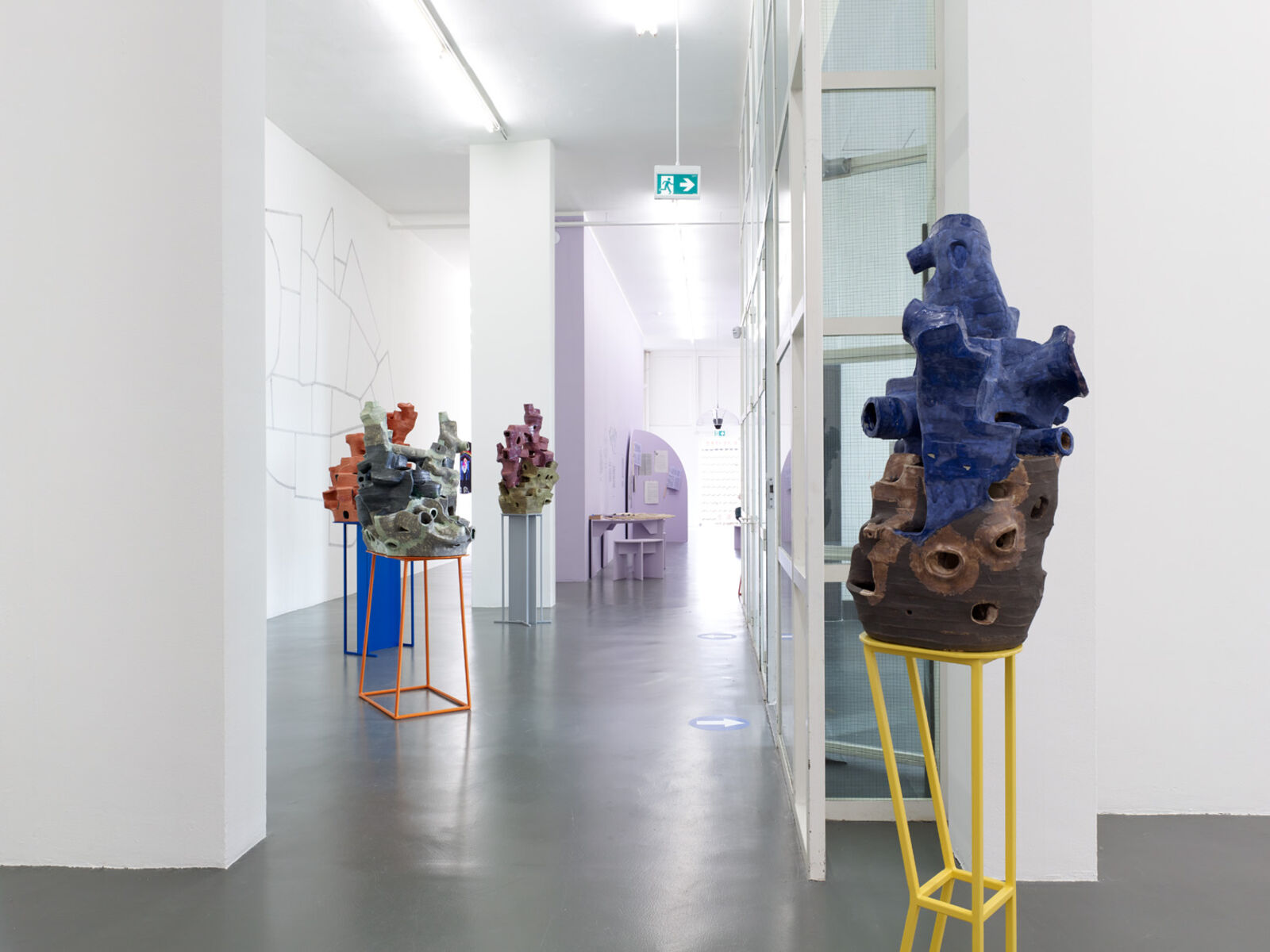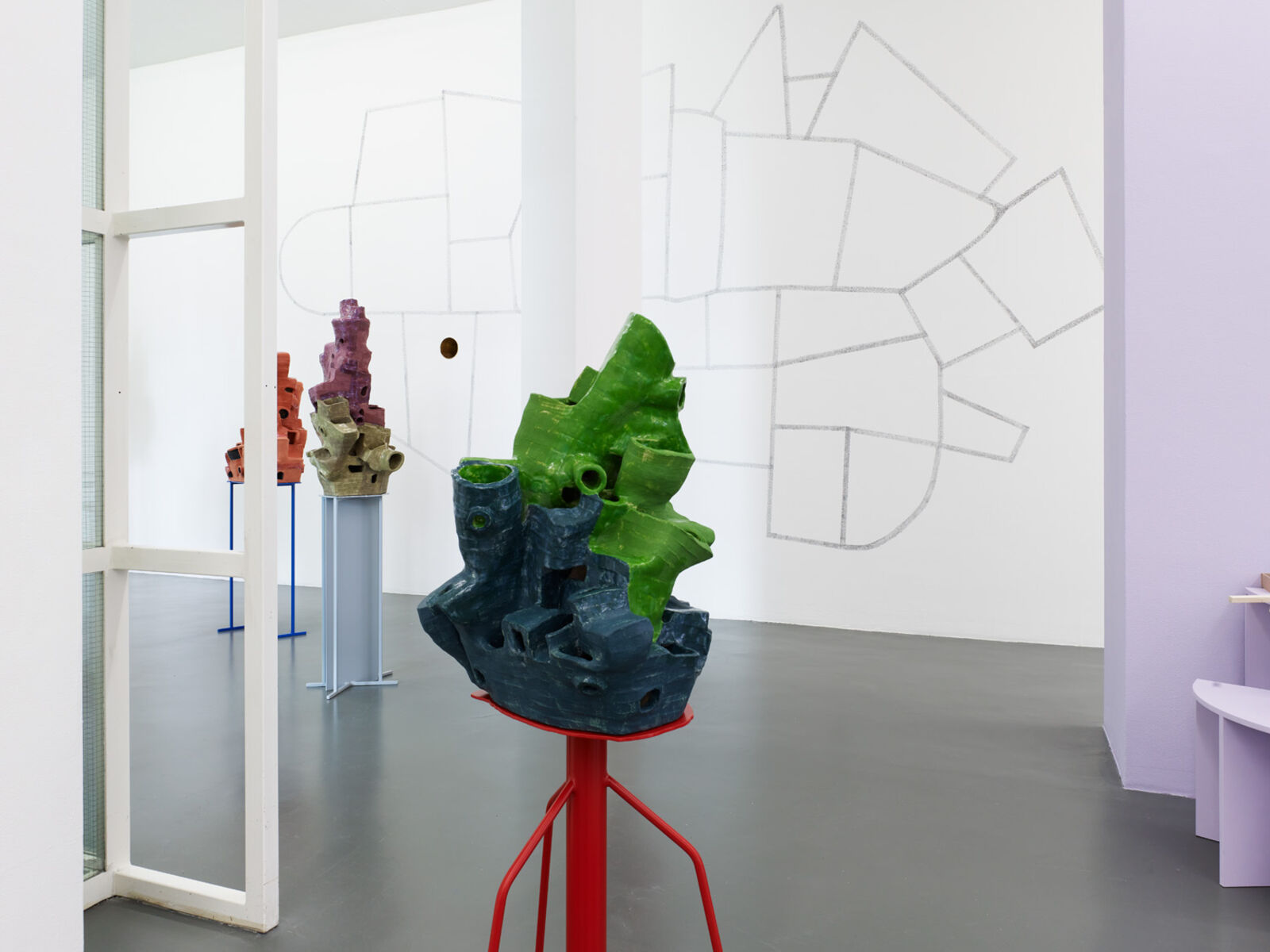Domenico Mangano & Marieke van Rooy: Dilution Cafeteria
The work of artist duo Mangano van Rooy is characterized by a combination of archival and field research and artistic practice. Micro-stories, and political and architectural constructions of the social, as well as research into the history of the local, forms the basis of their artistic inquiry. Combining archival research with educational projects, their work manifests across numerous mediums, including film, installation, photography, drawing, performance, and publications. Based in Amsterdam, the duo was formed in 2014. Before that, Italian born Domenico Mangano practiced as an artist since the late nineties, and Netherlands-born Marieke van Rooy developed a background in academia, with a focus on the political history of the built environment.
For 84 STEPS, the duo presents a newly commissioned work, the Dilution Cafeteria. The commission marks the latest iteration in their long-term series, The Dilution Project. Begun in 2014, this project centers on the subject of anti-psychiatry and the related democratic movement that unfolded during the 1970s in the Netherlands. The artists investigated what came to be known as the Nieuw Dennendal experiment, developed by psychologist Carel Muller in collaboration with the progressive architect Frank van Klingeren. Underpinning the experiment was the utopian notion of ‘dilution’. At its heart, was Muller’s insistence on the need to re-conceive the spaces and systems of psychiatric care to allow for the intermingling of in-patients with the local communities they were surrounded by. Faced with resistance on numerous counts, the experiment was never realized.
Their latest iteration, Dilution Cafeteria, develops a new facet of research into the concept of the ‘sensory cafeteria’. Developed in the United States in the 1960s, sensory cafeterias were designed as spaces in which to engage all the senses. Sited within care institutions, they were intended as environments in which to research in-patients with an “intellectual” disability. A decade later, the concept of these settings was employed in the Netherlands, adapted to focus on the positive effects of sensorial stimulation as opposed to operating as a site of scientific research. These were referred to as snoezelruimtes, which, to this day, the Netherlands takes a pioneering role internationally. Presented here, Mangano van Rooy seeks to borrow from this concept an emphasis on the way in which knowledge and experience is socialized through the senses. Comprising a cumulative installation of six glazed ceramic sculptures, and a charcoal mural in which a megaphone is incorporated, the installation presents complex inner labyrinths, which the artists’ refer to as “mental architectures.” Varying in color, form, and texture, the sculptures act as intermediaries, marking the occasion upon which the senses are registered. Over the course of the year, the installation will come to be activated in its capacity as a sensorial cafeteria, with special emphasis on sound and touch.
The artists would like to thank Sundaymorning@EKWC, Oisterwijk, where the glazed ceramics were produced in residence and Stichting Stokroos for their financial support.
